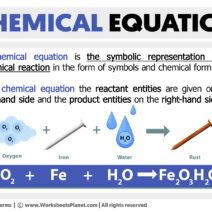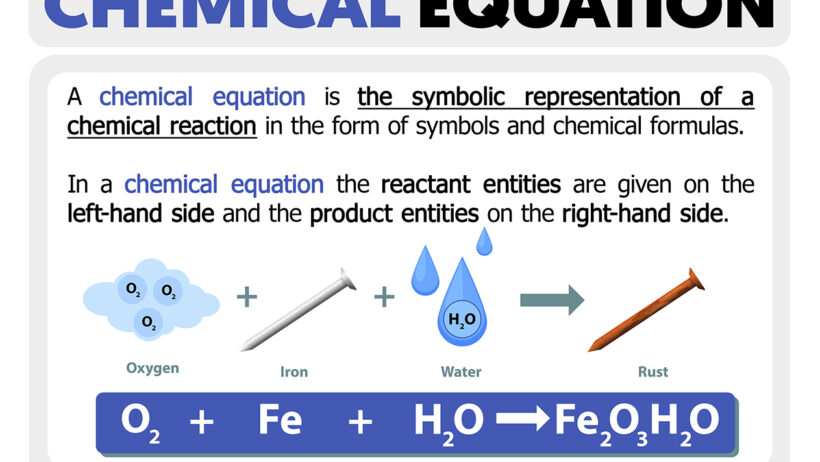Climate change has become a pressing global issue, one driven by multifaceted dynamics that are often encapsulated in a deceptively simple chemical equation. At the heart of this equation lies carbon dioxide (CO2), a molecule that has garnered much attention due to its substantial role as a greenhouse gas. Understanding the interrelation between human activities, CO2 emissions, and climate change requires an exploration of the processes by which CO2 enters the atmosphere, its effects on Earth’s temperature, and the broader implications for ecological systems.
To comprehend the chemical equation of climate change, we must first delve into the fundamental processes that generate CO2. The combustion of fossil fuels—coal, oil, and natural gas—represents one of the principal sources of anthropogenic CO2 emissions. The equation for this reaction is relatively straightforward. When fossil fuels combust, they react with oxygen (O2) to produce carbon dioxide and water (H2O). Represented as:
CH{sub}x + O{sub}2 → CO{sub}2 + H{sub}2O
This reaction, while chemically simple, has profound implications. The massive scale at which fossil fuels are burned, particularly in industrialized nations, results in a staggering amount of CO2 released into the atmosphere. Thus, our reliance on fossil fuels fundamentally alters the natural greenhouse effect, as excess CO2 traps more heat, leading to a rise in global temperatures.
Additionally, deforestation exacerbates the situation. Trees act as carbon sinks, absorbing CO2 during photosynthesis. However, when forests are cleared, not only is this absorption capacity diminished, but the carbon stored in trees is released back into the atmosphere. The relationship between deforestation and increased CO2 levels underscores an often overlooked complexity in the fight against climate change.
As atmospheric CO2 levels soar, they engender a series of cascading effects on global temperatures and weather patterns. The Earth’s surface temperature is modulated by the balance between incoming solar radiation and outgoing infrared radiation. CO2 and other greenhouse gases hinder the latter, leading to a net increase in energy retained within the Earth’s system. This phenomenon is best articulated through the greenhouse effect, wherein gases trap heat within the atmosphere, creating a warming blanket around the planet.
The ramifications of rising CO2 levels extend far beyond the mere increase in temperature. Global warming has commenced a series of catastrophic changes, including the melting of polar ice caps and glaciers, rising sea levels, and more extreme weather phenomena. The Arctic, in particular, serves as a canary in the coal mine. With its ice melting at an alarming rate, we witness a direct correlation between rising CO2 levels and climatic shifts. The resulting impact not only threatens seals and polar bears but also poses a danger to human populations residing in coastal regions.
With atmospheric CO2 reaching alarming thresholds—over 400 parts per million—the urgency of addressing climate change has never been more evident. Environmental scientists often refer to this condition as “tipping points,” wherein small changes can precipitate irreparable damage to ecosystems. Coral bleaching due to increased water temperatures and acidification—a direct consequence of absorbed CO2—exemplifies this phenomenon. The delicate balance of marine ecosystems can be severely disrupted, leading to species extinction and loss of biodiversity.
Moreover, the enriched CO2 levels are transforming biogeochemical cycles. For instance, as temperatures rise, soil organic matter decomposes more rapidly, releasing additional CO2 and exacerbating warming. This feedback loop illustrates the complexity of climate mechanisms, with CO2 acting as a linchpin, influencing not only atmospheric conditions but also terrestrial ones.
In response to this dire situation, global initiatives such as the Paris Agreement aim to mitigate CO2 emissions by advocating for emissions reduction and promoting sustainable practices. These frameworks underscore the need for a paradigm shift towards renewable energy sources, which include solar, wind, and hydropower. Transitioning to these alternatives is crucial in reducing our reliance on fossil fuels, and thereby curbing CO2 emissions.
Another avenue of exploration is carbon capture technology. This innovative approach seeks to capture CO2 emissions at the source—be it power plants or industrial processes—before they can enter the atmosphere. Although this technology is in its developmental stages, it presents a tantalizing prospect for managing emissions while still utilizing fossil fuels in the interim. However, widespread adoption will require substantial investment and political will.
In addition to technological solutions, a cultural shift towards sustainable living practices is essential. Individuals can contribute to the fight against climate change by reducing energy consumption, embracing public transportation, and advocating for a plant-based diet. Such lifestyle changes, though seemingly incremental, can exert a significant influence when adopted en masse.
The chemical equation of climate change is emblematic of a broader narrative, one that encapsulates our relationship with the environment. Carbon dioxide serves as a powerful reminder of the consequences of our actions and the need for a responsible stewardship of our planet. As the Earth warms and ecosystems struggle to adapt, it becomes increasingly clear that the solution necessitates a collective effort—one that integrates scientific understanding, technological innovation, and a commitment to sustainable practices to forge a healthier and more resilient planet for future generations.






